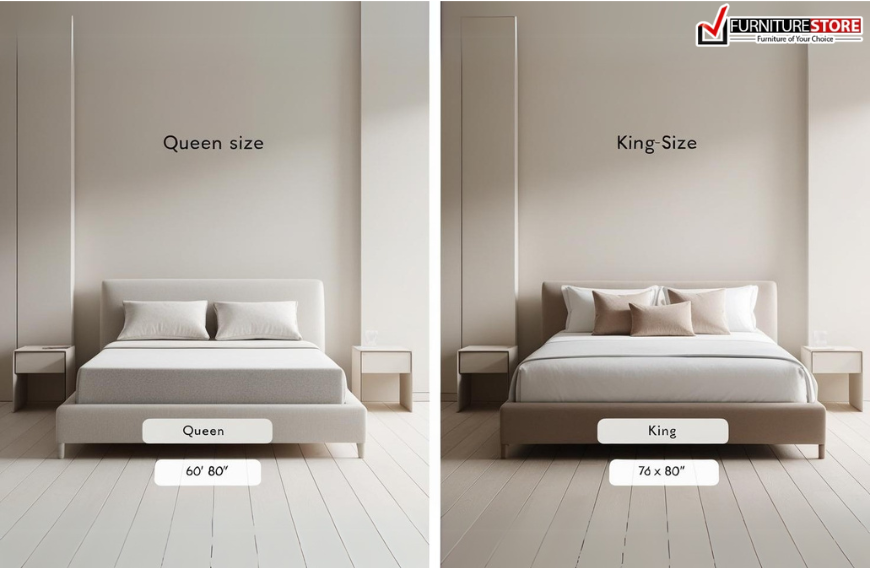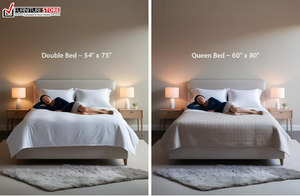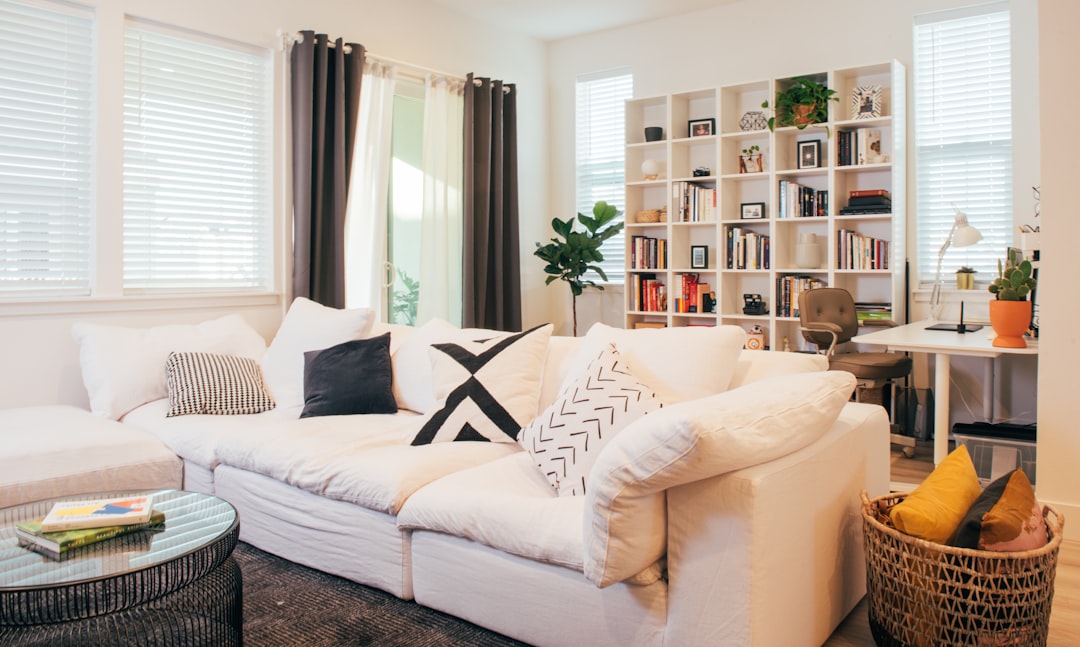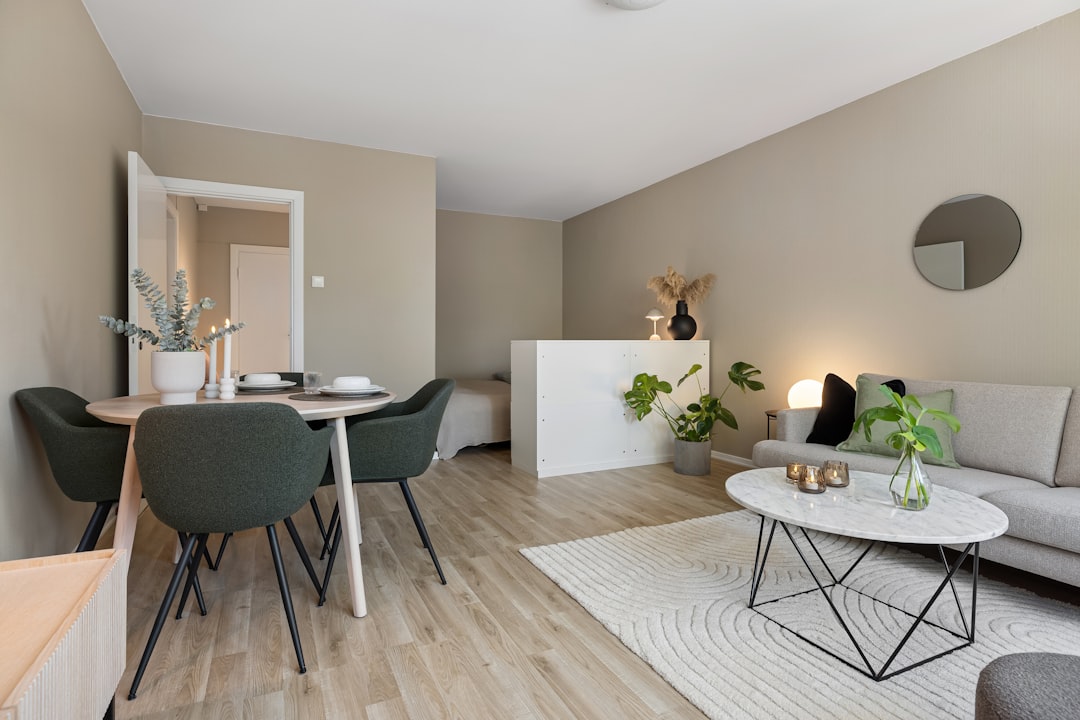When it comes to selecting the perfect bed, the dimensions can make all the difference between a restful night’s sleep and a restless one. Choosing between a king-size and a queen-size bed isn’t just about the width or length; it's about understanding your space, lifestyle, and sleeping preferences. A king-size bed provides ample room for couples who enjoy stretching out or families who sometimes share the bed with little ones. On the other hand, a queen-size bed can be an excellent choice for smaller bedrooms or for those looking to maximize space without sacrificing comfort. In this article, we’ll delve into the key differences between king size vs queen size bed dimensions, exploring which one might be the ideal fit for your home and sleep habits. Dive in to discover how the right bed can transform your sleep experience!
Understanding Bed Sizes: A Quick Overview
When navigating the world of bed sizes, it can sometimes feel like you’re drowning in a sea of options. To make the right choice, it's essential to understand the basic dimensions and how they translate to your sleep experience. The most common bed sizes include Twin, Full, Queen, King, and California King. Each offers unique benefits depending on your needs and bedroom space. Twin beds are perfect for children or single sleepers, while Full beds, also known as double beds, provide more space for solo adults or teens. The focus of this article, however, is on the larger, more luxurious options: Queen and King beds.
Understanding the dimensions of Queen and King beds is the first step in making an informed decision. A standard Queen bed measures 60 inches wide by 80 inches long, making it spacious enough for two people to sleep comfortably yet compact enough to fit into most bedrooms without overwhelming the space. Conversely, a standard King bed measures 76 inches wide by 80 inches long, offering substantially more room for couples, pets, or children who might crawl into bed during the night.
The difference in dimensions between these two bed sizes may seem minor, but it can significantly impact your comfort and sleep quality. Choosing the right bed size is not just about the space but also about personal preference and lifestyle. Understanding these basics paves the way for a deeper dive into the specifics of King and Queen beds, helping you make the best choice for your sleep needs.
King Size Bed Dimensions: What You Need to Know
A King size bed is often considered the epitome of luxury in bedroom furniture. With dimensions of 76 inches wide by 80 inches long, it provides ample space for sleepers to stretch out and find their perfect position. This extra width is especially beneficial for couples who prefer a bit more personal space or for those who share their bed with children or pets. The King size bed's generous proportions ensure that everyone has enough room to move without disturbing one another, promoting a restful night's sleep.
If you’re furnishing a master bedroom with generous space, you might also want to explore furniture by room collections to complement the scale and luxury of a King bed. Coordinating your bedroom furniture can elevate both comfort and aesthetics.
One of the most significant advantages of a King size bed is the ability to accommodate various sleeping styles. Whether you sleep on your back, side, or stomach, the extra space allows you to shift positions comfortably throughout the night. For couples, this means less chance of bumping into each other and more opportunity to find a comfortable spot. Furthermore, the added width can be a lifesaver for those who suffer from sleep disorders such as restless leg syndrome, as it provides the space needed to move freely without interrupting sleep.
However, the size of a King bed comes with its own set of considerations. The larger dimensions require a spacious room to avoid a cramped feeling. Ideally, a bedroom should be at least 12 feet by 12 feet to comfortably fit a King bed along with other furniture. Additionally, moving a King bed can be more challenging due to its size and weight, especially in homes with narrow hallways or staircases. Despite these logistical challenges, the comfort and luxury provided by a King size bed often outweigh the drawbacks, making it a popular choice for those who prioritize space and comfort in their sleep environment.
Queen Size Bed Dimensions: Key Features
A Queen size bed is a versatile and popular choice for many households, offering a balance of comfort and space efficiency. Measuring 60 inches wide by 80 inches long, the Queen bed provides ample room for two adults to sleep comfortably while being compact enough to fit into smaller bedrooms. This makes it an excellent option for guest rooms, smaller master bedrooms, or for anyone looking to maximize their living space without sacrificing sleep quality.
Looking to enhance a smaller space with the right furnishings? Explore our curated living room furniture collections that match well with bedrooms sized for Queen beds, ensuring continuity of style and scale.
One of the key features of the Queen size bed is its adaptability to different bedroom layouts and designs. Its moderate dimensions allow for more flexibility in arranging furniture, which can be particularly beneficial in urban apartments or homes with limited space. The Queen bed's size also makes it easier to move and maneuver compared to larger beds, such as a King or California King, which can be a significant advantage for those who relocate frequently or have homes with tight staircases and hallways.
Comfort-wise, a Queen bed strikes a good balance between space and intimacy. It is wide enough to allow couples to sleep comfortably without feeling cramped, yet small enough to promote closeness. This can be particularly advantageous for couples who prefer to sleep near each other or for those who enjoy a cozier sleeping environment. Additionally, the Queen size bed can accommodate various sleeping positions, making it a versatile choice for different sleep preferences. Overall, the Queen bed's dimensions and features make it a practical and comfortable option for many households.
Comparing King and Queen Size Beds: A Side-by-Side Analysis
When choosing between a King and Queen size bed, it's essential to consider various factors that go beyond just the dimensions. While both bed sizes offer distinct advantages, understanding their differences can help you make a more informed decision. Let's start with the most obvious difference: the size. A King bed is 16 inches wider than a Queen bed, which translates to more personal space for each sleeper. This extra width can be particularly beneficial for couples who need more room to move or for families who share their bed with children or pets.
Another important consideration is the impact on your bedroom space. A Queen bed's smaller footprint makes it a better option for rooms with limited space, allowing for more flexibility in furniture arrangement and movement. In contrast, a King bed requires a larger room to ensure it doesn't dominate the space. This can be a crucial factor if you live in a smaller home or apartment where every square foot counts. Additionally, the size of the bed can influence the overall aesthetic of your bedroom, with a King bed offering a more luxurious and grand look, while a Queen bed provides a more streamlined and cozy feel.
If you’re considering entertainment or functionality in the bedroom, adding TV stands & media furniture that align with your chosen bed size can enhance your space’s utility and cohesion.
Finally, consider the cost implications. Generally, King beds and their accessories, such as mattresses, bed frames, and bedding, tend to be more expensive than their Queen counterparts. This is due to the larger size and the materials required to accommodate the extra width. If budget is a significant concern, a Queen bed might be a more economical choice without compromising on comfort. However, if space and luxury are your top priorities, investing in a King bed could be well worth the additional cost. By weighing these factors, you can determine which bed size aligns best with your needs and preferences.
Factors to Consider When Choosing Between King and Queen Beds
Choosing the right bed size is a deeply personal decision that depends on several critical factors. One of the primary considerations is the available space in your bedroom. A King size bed, with its expansive dimensions, requires a larger room—ideally 12 feet by 12 feet or more—to accommodate the bed itself along with other essential furniture. In contrast, a Queen bed can comfortably fit into rooms as small as 10 feet by 10 feet, making it a more practical option for smaller homes, apartments, or guest rooms.
If you’re trying to optimize a smaller space, consider browsing our range of compact furniture, designed to maximize functionality without overcrowding the room. These pieces pair well with Queen-sized beds in cozier setups.
Another crucial factor is your lifestyle and who you share your bed with. If you have children or pets that frequently join you during the night, the extra space provided by a King bed can be invaluable. It offers plenty of room for everyone to sleep comfortably without disturbing each other. Conversely, if you're sleeping alone or with a partner who doesn't need a lot of space, a Queen bed can be more than sufficient while also freeing up room for other furnishings or activities within the bedroom.
Your budget is another key consideration. King-size beds and their accessories generally come with a higher price tag due to their larger size. This includes not only the bed frame and mattress but also bedding, pillows, and even delivery costs. Queen beds are typically more affordable and widely available, offering a more budget-friendly option without compromising on comfort. By evaluating your space, sleeping habits, and financial constraints, you can make a more informed and satisfying choice between these two popular bed sizes.
Pros and Cons of King and Queen Size Beds
Each bed size comes with its own set of pros and cons, and understanding these can help you make a more informed decision. Starting with King beds, one of the most significant advantages is the generous space they provide. This can be particularly beneficial for couples who prefer a more personal sleeping room or families who co-sleep with children. The added width of a King bed also allows for more flexibility in sleeping positions, reducing the likelihood of disturbing your partner during the night.
However, the size of a King bed can also be a drawback. It requires a large bedroom to fit comfortably, and moving or rearranging a King bed can be a logistical challenge. The higher cost of purchasing and maintaining a King bed—including the mattress, bed frame, and bedding—can also be a limiting factor for some. Additionally, the larger size may limit your options when it comes to bedroom furniture layout, potentially making the space feel crowded or less functional.
Queen beds, on the other hand, strike a good balance between comfort and practicality. They are more space-efficient, easier to move, and generally more affordable. A Queen bed fits well in most bedrooms and provides adequate sleeping space for couples or individuals who enjoy having a bit more room. The widespread popularity of Queen beds also means that accessories and bedding are more readily available and often come in a broader range of styles and price points.
That said, Queen beds may feel cramped for some couples, especially if one or both individuals tend to move around during the night. They may also be less suitable for families who share the bed with children or pets. By weighing the pros and cons of each bed size, you can better determine which option aligns with your specific needs and preferences, ensuring a restful and enjoyable sleep experience.
Conclusion: Making the Right Choice for Your Sleep Comfort
Deciding between a King and queen-size bed ultimately comes down to your unique needs, lifestyle, and available space. A King bed offers unmatched comfort and luxury, ideal for spacious master bedrooms and households where sleep space is a top priority. It’s the go-to choice for those who don’t want to compromise on room and relaxation. On the other hand, a Queen bed delivers versatile comfort and practicality, fitting well in smaller bedrooms and budgets while still offering ample space for most couples.
Whether you're outfitting a new home, upgrading your current sleeping arrangement, or designing a multifunctional space, the right bed size can make all the difference. Consider your room dimensions, sleeping habits, and how you use your bedroom to guide your decision. Don’t forget to pair your bed with the right bedroom pieces—from compact furniture for tight spaces to elegant living room furniture and stylish TV stands & media furniture for a cohesive home design.
By taking all these elements into account, you'll be well on your way to choosing the perfect bed that supports both your sleep and your lifestyle.







